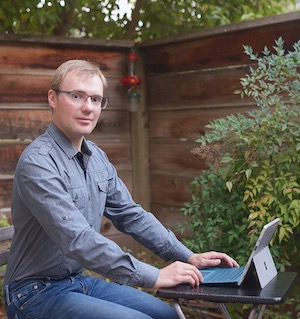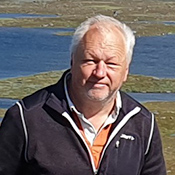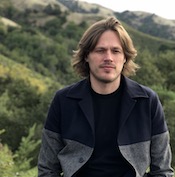The EEF Board is Having its 2022 Election
The Erlang Ecosystem Foundation is set up as a community organisation, to be run for and by the community. As such, the role of board member is assigned by a democratic process, where voting members get to run and vote for their preferred candidates.
The process to be followed is described in legalese in our bylaws, but this page will explain more clearly how we plan for this to be working forwards.
Important Dates
The following dates are important to the campaign:
- February 25: Elections announced, people can submit their candidacy
- March 10: Last day to submit your candidacy. Email acceptance ends at midnight PT on the 11th
- March 11: Votes are open
- March 18: Votes are closed
Election results will be announced as soon as possible after closing.
Do not forget to make sure you are a voting member to take part into the elections.
What Does a Board Member do?
Board members’ main involvement is essentially to sit in meetings (usually over video chat), and vote on the direction the foundation will take. They are responsible for things such as:
- Choosing how to allocate the budget of the Foundation (within the regulations specified by the bylaws and the IRS)
- Choosing which working groups are going to be accepted
- Choosing which working groups may be contracted if they are not meeting their objectives
- Handling administrative details (such as running these elections)
- Helping coordinate efforts across working groups
- Have the ability to change and adjust bylaws
- Bear the responsibility and be accountable for the Foundation’s ongoing success
It is ultimately a fairly political job focused on “running the foundation”, distinct from the more direct involvement people in specific working groups usually have. Board members are not precluded from being part of working groups either.
Additionally, the roles of Director and Secretary can only be assigned to people on the board; they are the people who have all the actual administrative duties related to legal paperwork (writing actual signatures!), finance, insurance, maintaining meeting minutes, and ensuring that bylaws are respected by the rest of the board.
None of these roles are compensated; this is a volunteer effort because you care to steer the foundation in a direction you believe is important. You may also put the role of board member on your LinkedIn page or resume if that suits you.
Who are the Outgoing Board Members?
While the founding members assigned themselves to be part of the board as part of the initial bootstrapping effort, the board has been randomly divided into three cohorts, A (containing 3 members), B (4 members), and C (4 members). To ensure continuity, only one cohort is re-elected each year. This means that you will be elected for 3 years at a time.
Here are the cohorts as defined until the next election:
A, to be re-elected in 2022, 2025, and every three years after:- Richard Carlsson
- Kenneth Lundin
- Maxim Fedorov
B, to be re-elected in 2024, 2027, and every three years after:- Miriam Pena
- Peer Stritzinger
- Sophie DeBenedetto
- Bryan Paxton
C, to be re-elected in 2023, 2026, and every three years after:- Sebastian Strollo (current Secretary)
- Fred Hebert
- Alistair Woodman (current President)
- Francesco Cesarini
For this years election, the members of cohort A are to be re-elected, so the seats of Richard, Kenneth, and Maxim are up for grabs.
How to Run?
If you want to run, you must be a voting member. Voting members are members who have done one or more of the following:
- A paying member paying their yearly membership or having paid for a lifetime membership
- A contributing member, who has spent about 5 hours monthly working in a working group, and who has contacted us at voting@erlef.org to claim their voting rights
- A managing member, who leads a working group and who has contacted us at voting@erlef.org to claim their voting rights
- A board member, who has a de-facto membership.
If you want to run, you should contact us at voting@erlef.org with the following information:
- Your name
- A short biography describing who you are
- A short text explaining why you think people should vote for you
- A photo (optional)
If eligible, you will then be added to the list of candidates on this page and on the ballots.
You have until end of day March 10 2022 Pacific time (PST) to submit your candidacy.
How to Vote?
You first have to have the right to vote, as a voting members. Voting members are members who have done the following:
- registered as a paying member paying their yearly membership or having paid for a lifetime membership
- acted as a contributing member, who has spent about 5 hours monthly working in a working group, and who has contacted us at voting@erlef.org to claim their voting rights
- A managing member, who leads a working group and who has contacted us at voting@erlef.org to claim their voting rights
The election will be open on March 11 2022, from midnight PST and for the next 7 days, until March 18 2022. On that day, a link will be sent to you to the address defined in your member profile. The link will forward you to a form, which will contain a list of all the candidates. Since three chairs are up for re-election, you will get to pick 3 candidates. Once you will have voted, you will not be able to change your votes. The candidates with the most votes will be part of the board for the next 3 years.
Who are the Current Candidates?
This list will be expanded as new candidacies are received
Maxim Fedorov

outgoing board member
Maxim has over 19 years of experience in networking, security and
scalability. He discovered the BEAM ecosystem when he joined WhatsApp,
and soon became a passionate community supporter. Maxim is an engineer
to the core, active contributor to Erlang/OTP (Process Groups, OTP 25
and peer module), owner and maintainer of well-known open source
projects (argparse, erlperf, power_shell).
Maxim believes in an open community with members pursuing a goal of growing the successful ecosystem. That is why you can often see Maxim replying to the Erlang forum questions, giving conference talks and Slack discussions.
Why vote for him?
In the last three years Erlang Ecosystem Foundation turned from a group of enthusiastic people into a real driving force. There are over 10 Working Groups connecting people, over 20 companies supporting, and many projects sponsored by the Foundation. I am proud to contribute to the success of this humble beginning.
I promise to do my best to continue the trend. Keep up the infra work, and push it further to provide everything that makes Foundation members successful, from the erlef.org website updates to Continuous Integration for Erlang/OTP and then all BEAM languages. Providing officially packaged installers would be my next goal for community benefit.
I believe that our mission is to bring companies and individuals to work together towards a single goal - ecosystem success. That’s why I am a BEAM ambassador at WhatsApp, willing to drive company engagement in the ecosystem, and work to improve the community.
Kenneth Lundin

outgoing board member
Kenneth Lundin is Head of the Erlang/OTP Team at Ericsson, and has been working with SW development since the late 70s. He joined the Erlang/OTP project in it’s early stages 1996 and has been working both with application components and the run-time system since then. Has been a technical leader and manager for the OTP team since 1998. Kenneth has also been active in the creation of the EEF and has been a board member since EEF was created.
Why vote for him?
I have an undisputed deep competence and interest in the area and can act as a bridge between the OTP team and the EEF board as well as working groups. It is a great advantage for the EEF board that I have inside information from the Ericsson OTP team and can influence the engagement in EEF Working groups to ensure that EEF and OTP have a good coordination and work in the same direction.
Svilen Gospodinov

Svilen is a software engineer with a technical leadership and entrepreneurship background. Currently he’s Engineering Team Leader at Remote where he manages one of the product engineering teams. He’s also the author of “Concurrent Data Processing in Elixir”, which was published by The Pragmatic Programmers in 2021.
Svilen discovered Elixir and the OTP back in 2015. A year later in 2016, he co-founded Heresy—a workflow and analytics platform for Sales. He adopted Elixir from the very beginning and never looked back. Elixir has been his primary language ever since, and he has been a vocal advocate of the language and the ecosystem.
Why vote for him?
Diversity, inclusion, and transparency are very important to me. I will always support and work on initiatives that uphold these values. The Elixir and Erlang community is incredibly kind and welcoming and this is something that we should always protect and continue to nourish.
I will help to grow the Foundation by reaching out and establishing work relationships with people and companies, to help attract new members and sponsorships.
I’m incredibly excited about the future of the Erlang and Elixir ecosystem, and I would love to see more and more companies using it. I’m particularly interested in supporting the adoption and education efforts of the Foundation. The said, I’m planning to work equally with all working groups and provide help wherever it is needed.
Ben Marx

Ben is the VP of engineering at Subspace where we use Elixir extensively as the control plane of our global network.
Ben has been an enthusiastic advocate for the BEAM since stumbling onto Elixir in late 2014. He helped organize and build up the Bay Area Elixir and Erlang meetup which has grown to over 2300 members.
Ben helped lead the Elixir adoption at Bleacher Report; B/R was one of the earliest adopters of Elixir at scale and has been used as a success story for Elixir specifically and the BEAM generally.
Since 2015 Ben has spoken at conferences around the world usually on Elixir adoption and best practices with the goal of helping others have an easy path into a BEAM language. He’s also given trainings on OTP and distributed systems in Elixir.
He co-authored Adopting Elixir with José Valim and Bruce Tate which is a distillation of the three authors’s experience in writing sound software with Elixir but also how to build teams, hire developers, and ensure that the adoption is a successful one.
Ben is a founding member of the EEF and has contributed to the marketing and education working groups.
Why vote for him?
As I’ve done at work and conferences, I’d continue to push for BEAM language adoption and easy and free access to training materials so other companies and developers can adopt a BEAM language and become successful with it.
A main focus would be on finding better ways to support open source development and library authors. The BEAM languages have so many great projects but there isn’t a clear way to fund and support OSS development. This is critical for us as a community to compensate those who spend so much of their time - for free - to develop and maintain libraries that the community depends on.
Above all, the EEF should be the fabric that ties the community together from local meetups to conferences around the world. Since the pandemic started, it’s become painfully apparent how important seeing friends and colleagues at conferences was and how critical the community is for new idea, new relationships, and the unexpected but welcome ideas that come out of a diverse group of people meeting.
We must focus on continuing to grow the community and increase new speakers and the diversity of the speakers themselves. We know we have a healthy and growing community when we see new faces at conferences as speakers and attendees and have new people committing code and libraries and using the BEAM in novel and exciting ways.